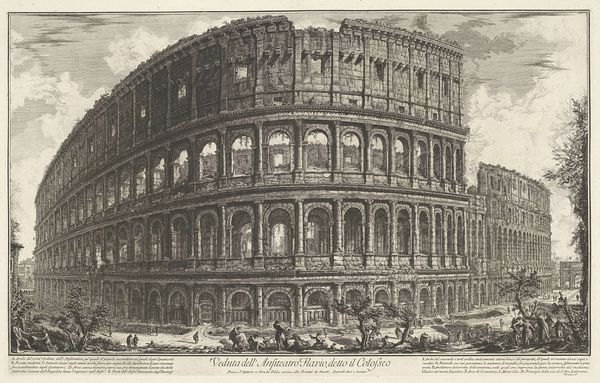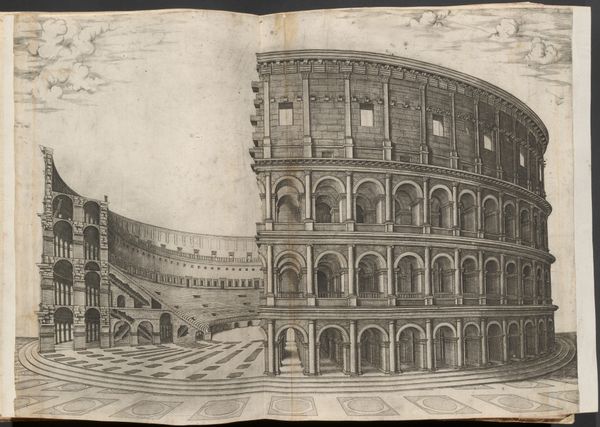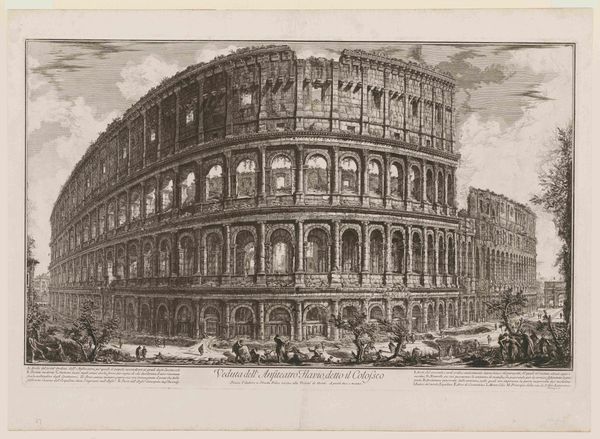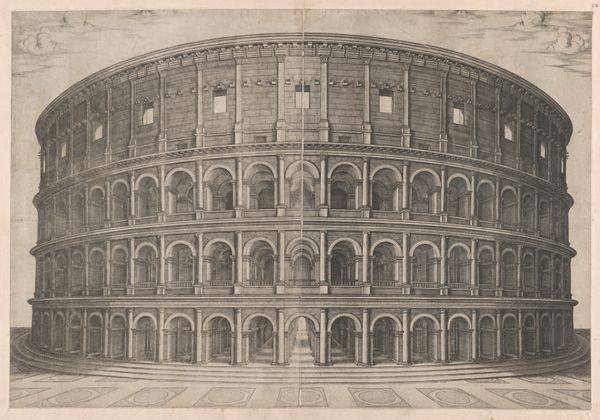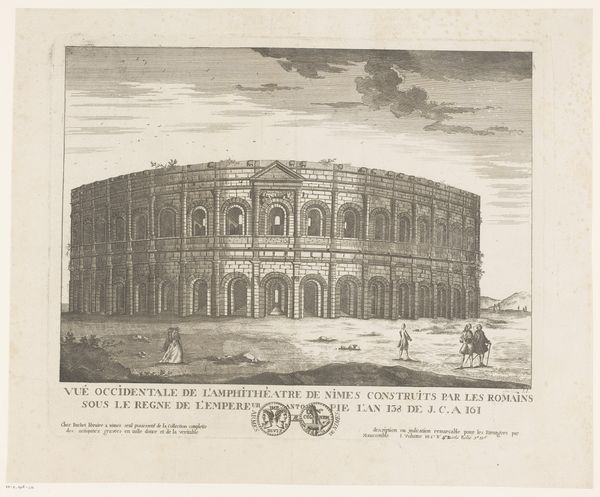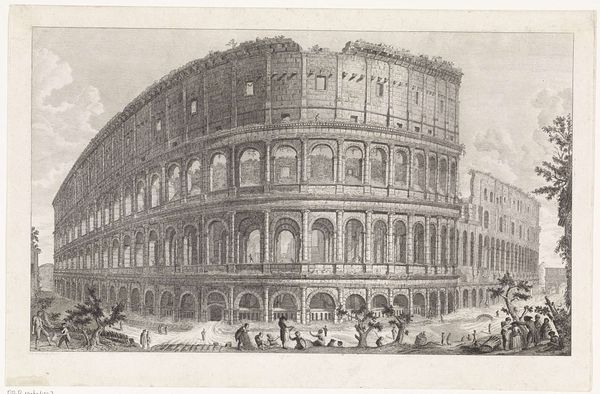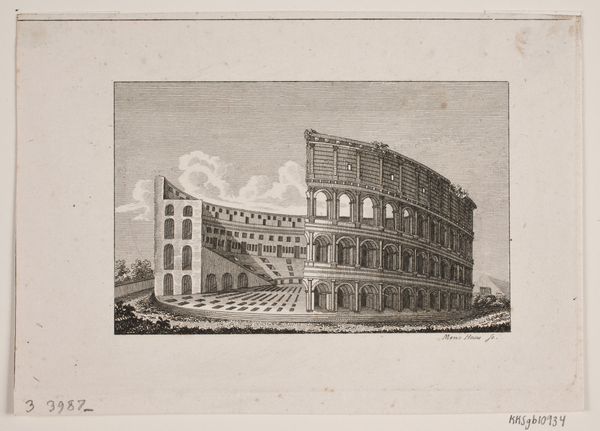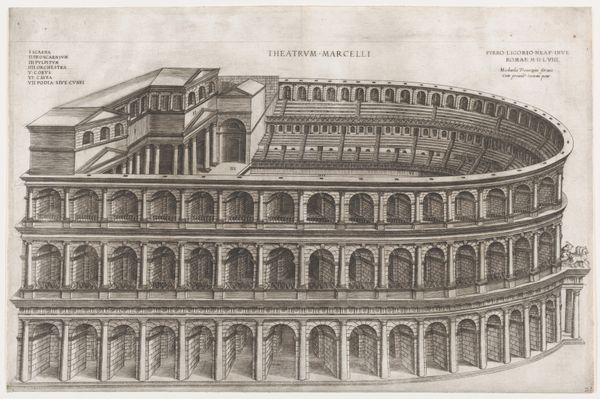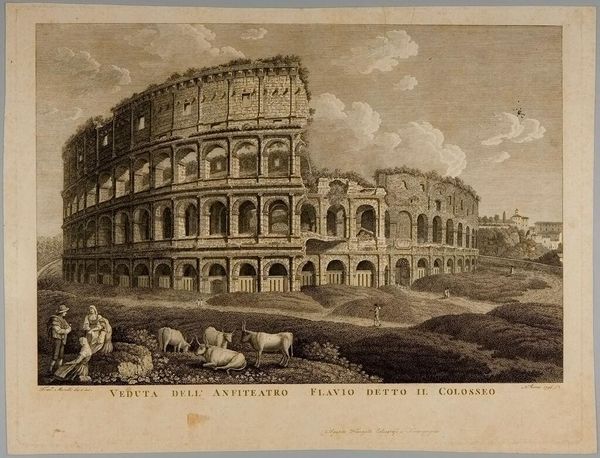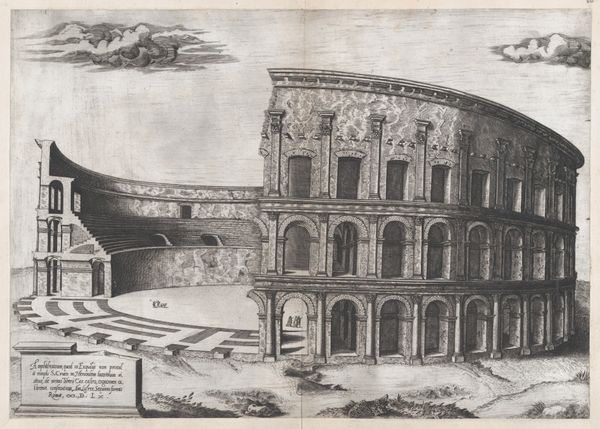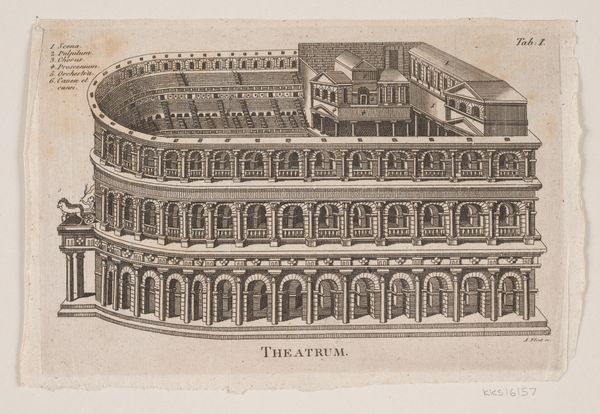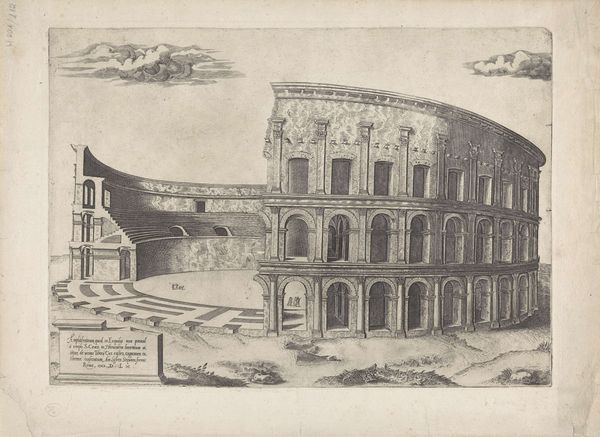
Speculum Romanae Magnificentiae: The Colosseum 1581
0:00
0:00
drawing, print, etching, engraving, architecture
#
drawing
# print
#
etching
#
landscape
#
cityscape
#
italian-renaissance
#
engraving
#
architecture
Dimensions: sheet: 16 1/16 x 21 in. (40.8 x 53.3 cm)
Copyright: Public Domain
Curator: Giovanni Ambrogio Brambilla's rendering of the Colosseum, dating to 1581 and part of the Speculum Romanae Magnificentiae, really captures a specific moment in the reception of Roman antiquity. It's striking how it uses printmaking, engraving and etching to convey both architectural precision and atmospheric perspective. Editor: My immediate impression is one of dramatic grandeur, despite the obvious ruinous state. The precision in the arches, the weight of the stone... it's almost melancholic, like a memory refusing to fade completely. The cityscape teeters between monumental and decayed. Curator: Exactly. And that's partly what makes the Speculum series so interesting. These prints circulated widely, shaping how Renaissance Europe envisioned Rome. Brambilla presents it not just as a relic but almost a stage setting, inviting a reassessment of imperial power. We must also keep in mind that these kinds of printmaking benefited wealthy class tourism which shaped urban spaces to conform to visitor expectations. Editor: You know, those arches and tiers, repeated endlessly, almost form a mandala. The Colosseum as a symbol—a focal point of power and control that repeats and reverberates through history. A powerful, if troubling, convergence of geometric harmony and brutal spectacle, wouldn’t you say? The Flavian Amphitheater served for all purposes. Curator: Yes, and consider what it meant to reproduce and circulate this image widely. The Colosseum wasn't simply a historical artifact, but an idea, a precedent for political and cultural aspirations within early modern Europe, although a highly idealized version of how spaces were used. It helped inform the design of theaters and public spaces throughout the continent, acting almost as an instruction manual. Editor: I like how the engraving technique emphasizes light and shadow, further enhancing this sense of memory and myth-making. It’s not just a record; it’s an interpretation, a narrative in monochrome. There is a great tension in witnessing such magnificent ruin. Curator: Absolutely. And considering the religious and political transformations happening at the time, Rome held a particular fascination. Brambilla’s print contributes to the dialogue between antiquity and the present, subtly proposing how the values of Rome might inform contemporary society and culture. Editor: For me, seeing this print invokes both the splendor and tragedy that the Colosseum symbolizes: a reminder that even the mightiest empires eventually crumble, yet their echoes, and their ruins, continue to shape us. Curator: Yes, and perhaps Brambilla understood that visual power resides in not only documentation but interpretation and the careful manipulation of symbolic language. It is how society absorbs Rome for itself and learns.
Comments
No comments
Be the first to comment and join the conversation on the ultimate creative platform.
